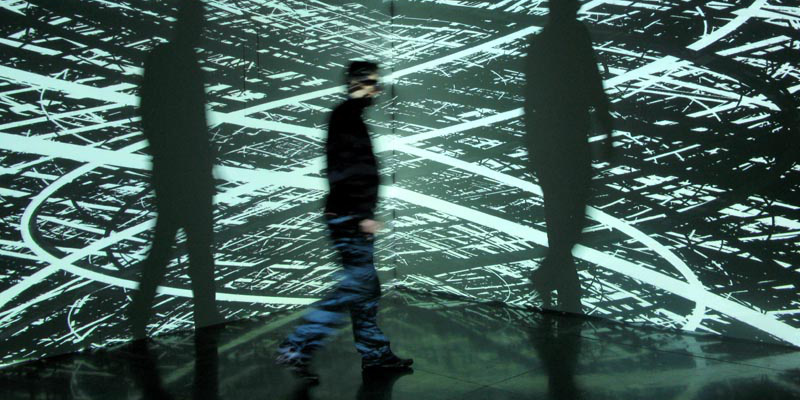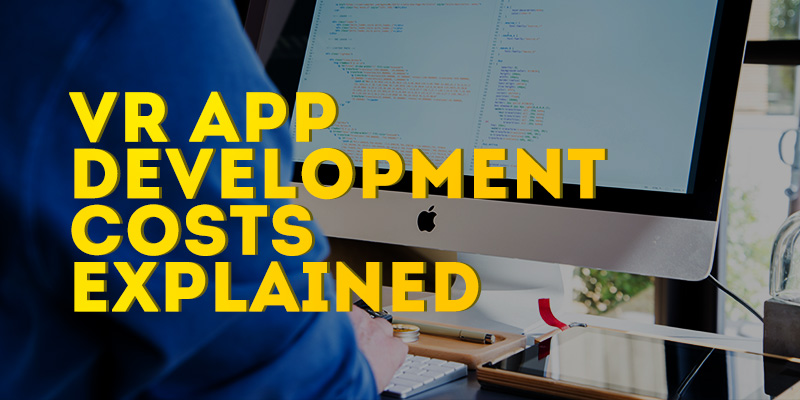The world of Virtual Reality has seen an exponential change within the past few months. According to the latest reports, almost $1.2 billion has been invested in the industry in the first quarter of 2016 alone. With such a phenomenal rise in the industry numbers so early in the year, great things are expected for VR/AR in the coming months.
Today, we talk about VR development best practices, the usual challenges a VR app designer may face, and the need for technical integration with creativity for a successful virtual reality endeavor.
It's Not Only About Entertainment
Given the penetration of VR within the video gaming and film industry, it’s associated mostly with the entertainment business. With virtual reality headsets being released one after another, for the general public, it’s natural that all the focus has been drawn strictly to the creative aspect of this novel concept. However, VR application development is so much more than just that.
For an industry as multi-faceted VR, it’s only right that application or game development should comprise of components equally complex. And they do. Creating a truly immersive environment where a user feels present within his surrounding is no easy feat, and a task rarely accomplished by novices.
The Challenges of VR App Development
VR game development is by no means limited to mastering a certain number of game platforms. Most developers today focus almost exclusively on either Unity or Unreal Engine for virtual reality applications. Though not necessarily a bad thing, in an industry that gets more competitive by the day, it’s hardly enough. More often than not, this lack of versatility is responsible for many of the challenges faced by VR game companies. These include but are not limited to:
- Latency
- Hardware integration
- Interfaces
Latency
Latency is essentially the delay between the execution of a certain act; the time interval that exists between the stimulus and its response. This is the cause of motion sickness experienced by the users of a game. The faster an application runs, and the lesser the latency, the better the visuals flow. It is the job of a highly experienced programmer to recognize the cause of latency and eradicate it from within the game or application to provide a seamless gaming experience.
Hardware Integration
Along with different software, VR games and applications all run on various hardware. To target a bigger audience and for a successful application or game, a developer needs to ensure that the application runs smoothly on not just one, but a number of virtual reality hardware devices. A seriously difficult task, this requires specific programmer expertise.
Interfaces
The interface, environment, graphics, menus, object manipulation and overall virtual reality interaction within a VR game or application is accomplished in a number of ways. Time consuming and complicated undertaking, choosing the right interface requires a strong technical background and specific expertise.
Best Practices for the Integration of VR Components
Virtual reality is not just pretty imagery and over the top graphics. It is a balancing act of visuals, audio and motions that recreate a possible real-life environment. True virtual reality immersion is by no means the enhancement of reality. It is in fact, the replacement of it. So how does one accomplish that? Certainly not by messing around on a gaming platform easily available for download online for free, that’s for sure.
For a true virtual reality game or application development, one needs great optics, head tracking, sensor work, high-grade image processing and speech recognition working in tandem with art and game design.
Image Processing
Image processing is the replication and reflection of a real life scenario within the game environment. It is the translation of the users visuals in real-time to the virtual world. Accomplished mainly with the use of high-end algorithm and coding, along with the creative input of an art designer, image processing is VR technicality at its finest.
Sensor Management
Gyroscopes, accelerometers, and magnetometers are all highly advanced motion sensors commonly used within smartphones and VR headsets. These sensors are mainly responsible for reducing the vomit-inducing movements felt by a VR app user. These sensors determine the positions, orientation, direction and movement of an object with respect to the user’s avatar within the scope of the game or application. They also help stabilize these movements so that the VR experience is a seamless one for the user.
How Much Does It Cost to Develop a VR App?
Here, we examine the factors that affect development cost for mobile VR apps and mobile VR gaming, including content, platforms, and choice of developer.
Speech Recognition
Speech recognition is the ability of an application to receive, interpret and comprehend the vocalized information that comes its way by the user. Moreover, it is also the ability of an application to recognize and respond to the commands received.
The above mentioned components of VR application development are the technical constituents that require a tight integration with artistic expertise. The key to successful development of a virtual reality game or application, these are the tools of mathematicians that are mastered only by a select few. They allow the creation of an allusive feeling of presence within a VR game using the natural behavior of a player by translating it into the very moves of the game.
Gaming companies usually focus on the game story and user experience and less on these mathematical components within a game. Giving into the creative hype that seems to surround the VR industry, companies tend to neglect the technical integration within their games or applications. This lack of expertise is often the reason why some are more successful than the others. But, an opportunity lies in this situation - the first movers will win it all. The gaming companies that will adopt fast and adjust to the new market situation - can become tomorrow’s market leaders.
How Can AppReal Help?
VR is the perfect amalgamation of artistic finesse and scientific knowledge. A virtual reality game or application is only successful if a designer’s creativity is perfectly balanced by the technical prowess of the VR programmer/developer.
A company that comprises of a group of highly experienced, and supremely talented designers as well as developers, AppReal is the solution to all your VR tech problems. The ability of AppReal's team of professionals to work together as a tightly meshed team to create a beautifully crafted piece of advanced technology per the customer’s specifications, is next to none.
That’s our claim and we stand by it. Have doubts? Give it a try. Get in touch today and let us put those doubts to rest.

